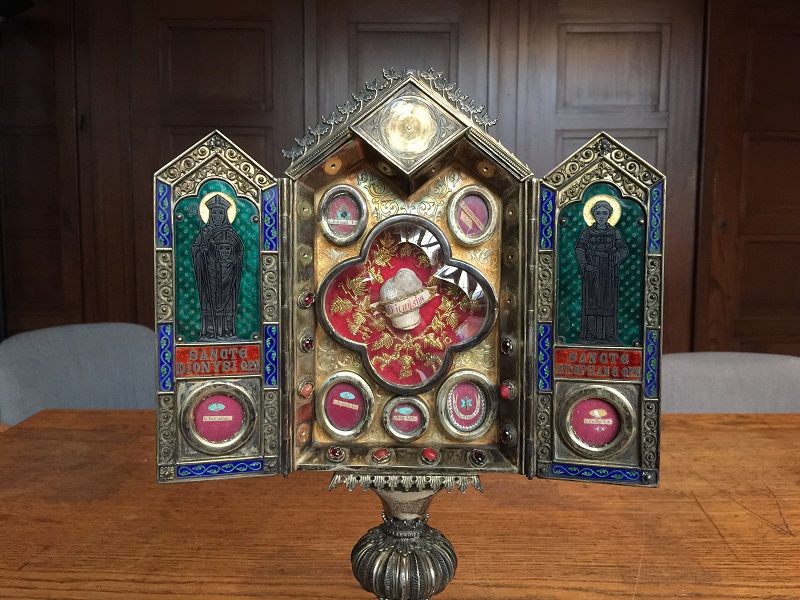The parish in Krefeld owns a largely unknown, but no less rare and high-quality reliquary with a central relic of Saint Dionysius and other saints.
The reliquary monstrance in the form of a small, two-winged house altar with gemstone trimmings made of almandine and coral, as well as elaborate enamel and filigree elements, dates from the end of the 19th century and was probably made by the Krefeld jeweler Peter Oediger (at that time near the Weber monument on the Südwall in Krefeld). . At least its engraving can be found in the base of the reliquary.
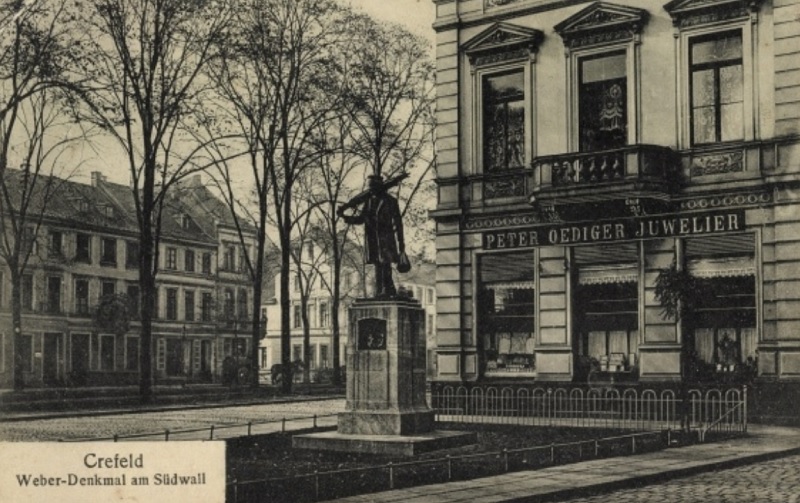
The coordinator of the church council and the pastor of the parish “Pope John XXIII” in Krefeld asked us for an actual recording and cataloging of the existing damage and for suggestions for the restoration of this special goldsmith object, which is of course of outstanding importance for the church of St. Dionysius in Krefeld is.
The year 2020 began for us with an extraordinarily exciting visit to the sacristy of St. Dionysius and gave us the unique opportunity to examine this beautiful historicism reliquary up close.
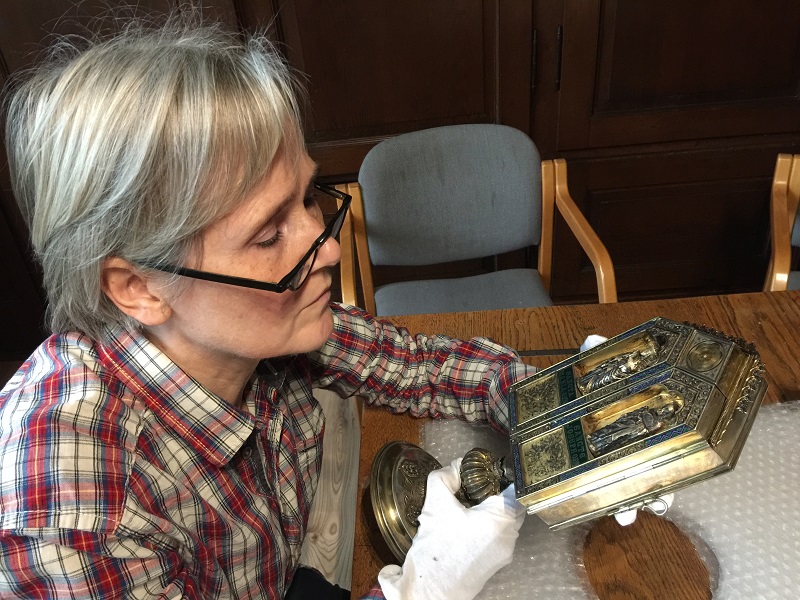
First of all, the most obvious damage to the reliquary was recorded. Particularly striking were the broken decorative leaves on the upper roof frieze of the reliquary and the many missing precious stones including settings around the middle part of the reliquary monstrance. In addition, a large gemstone setting in the “forehead” of the reliquary was probably missing and Quilling-style embellishments left and right below in the two outer sides of the "altar wings" in closed condition.
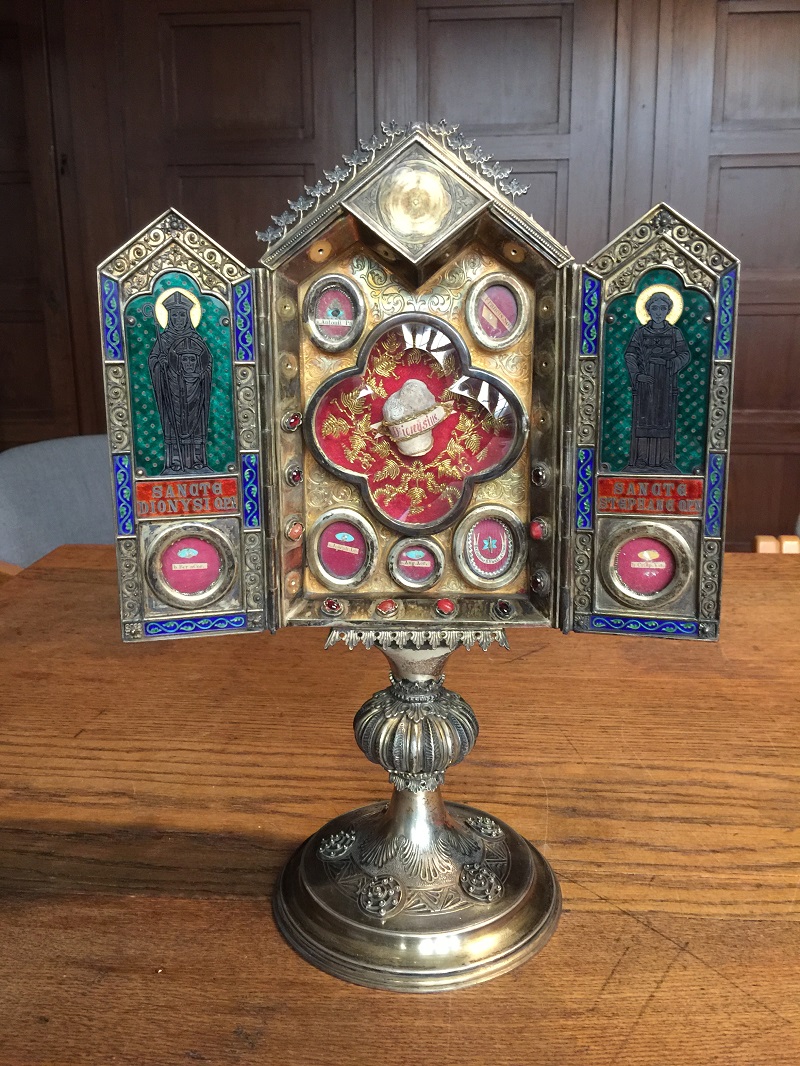
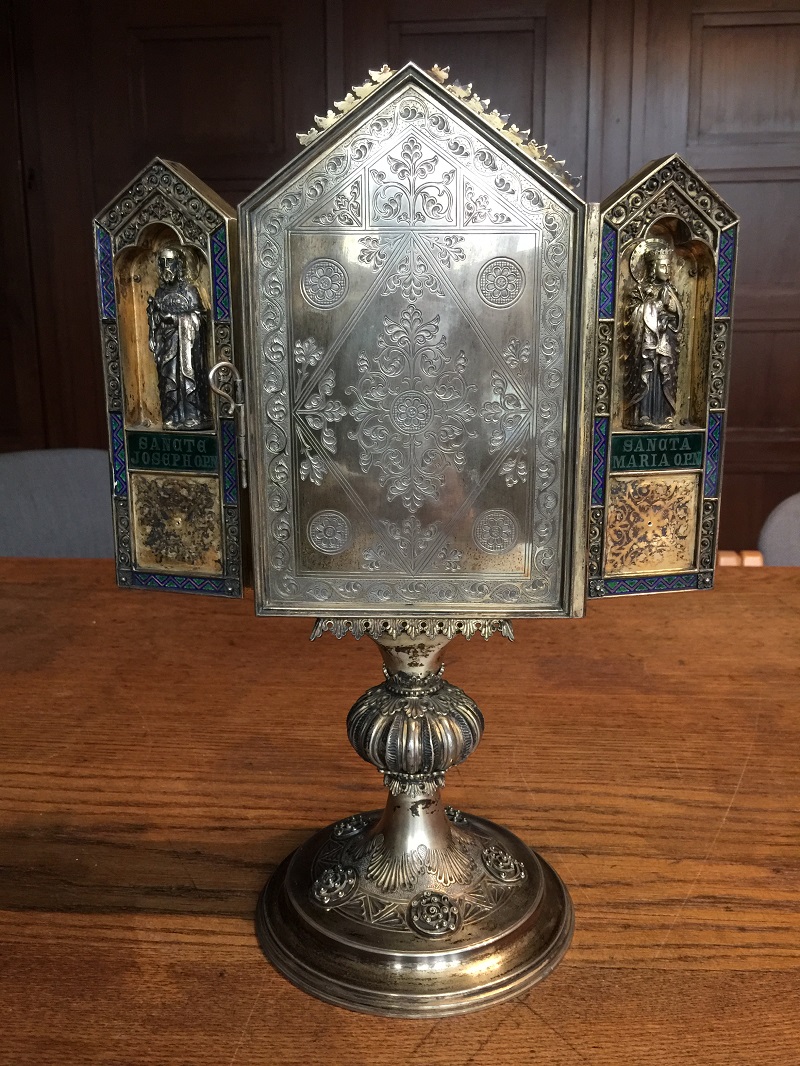
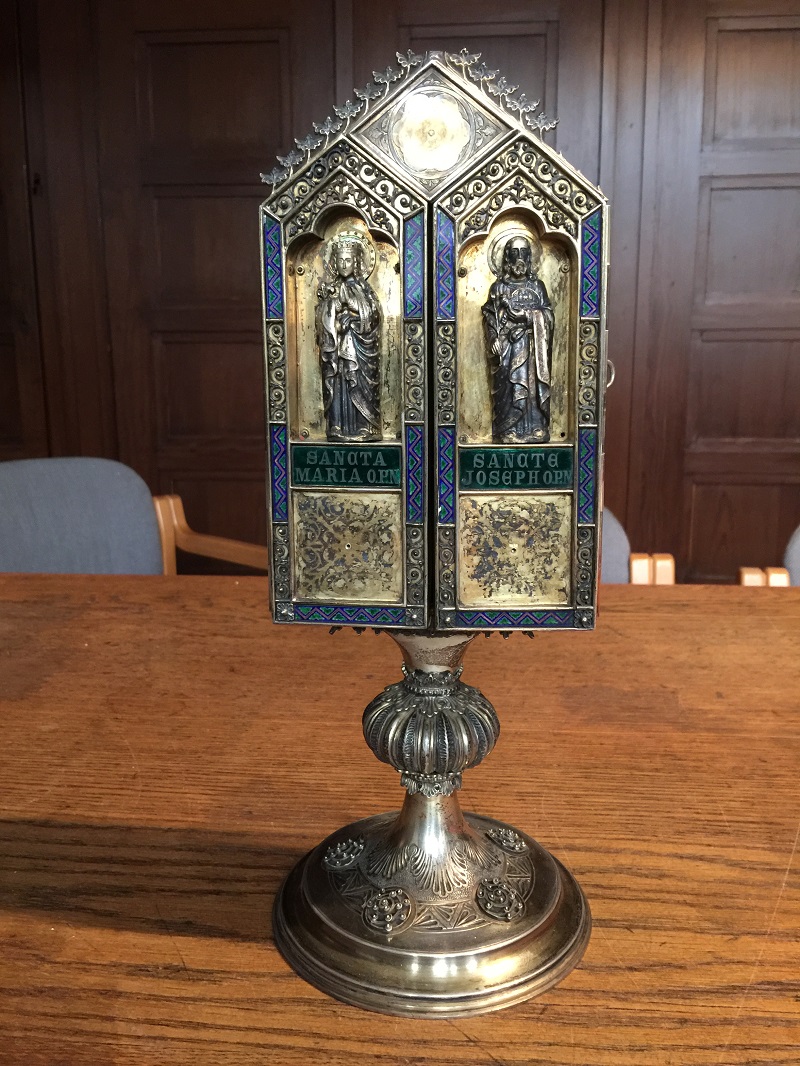
We had prepared extensively for this visit: Not only that we had a comparable leaf frieze in our home Atelier made and so we could practice its mold in advance, and the test screws, with which we could safely determine the existing threads of the missing gemstone settings, were part of our extensive work baggage.
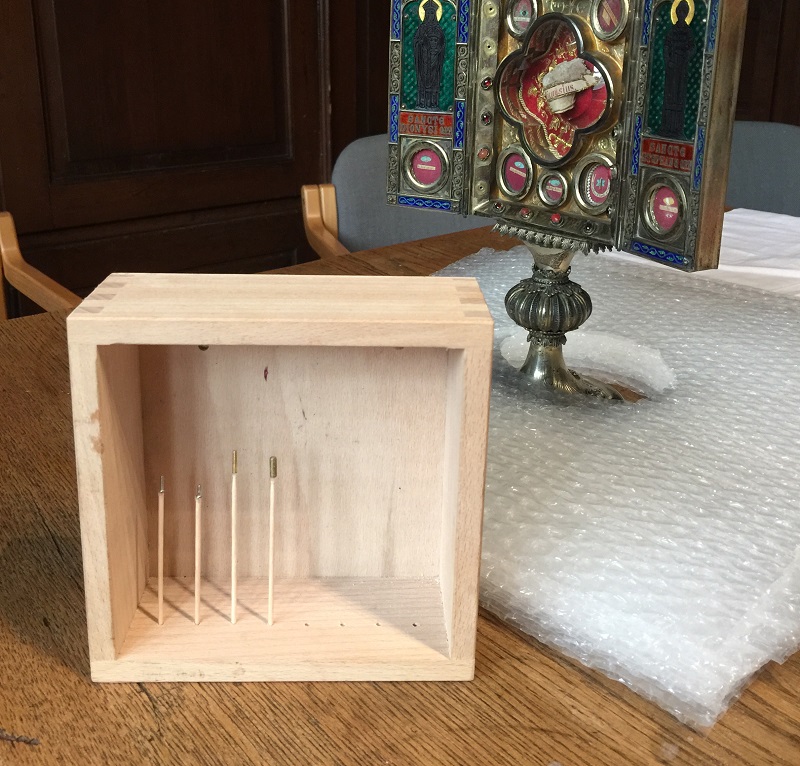
After securing the working environment with an anti-tilt device and covering the reliquary with a tailor-made “cloak” 😉, we began to mold the defective roof frieze with the help of fast-hardening silicone so that we could later reproduce the missing parts in our studio at home, true to the original.
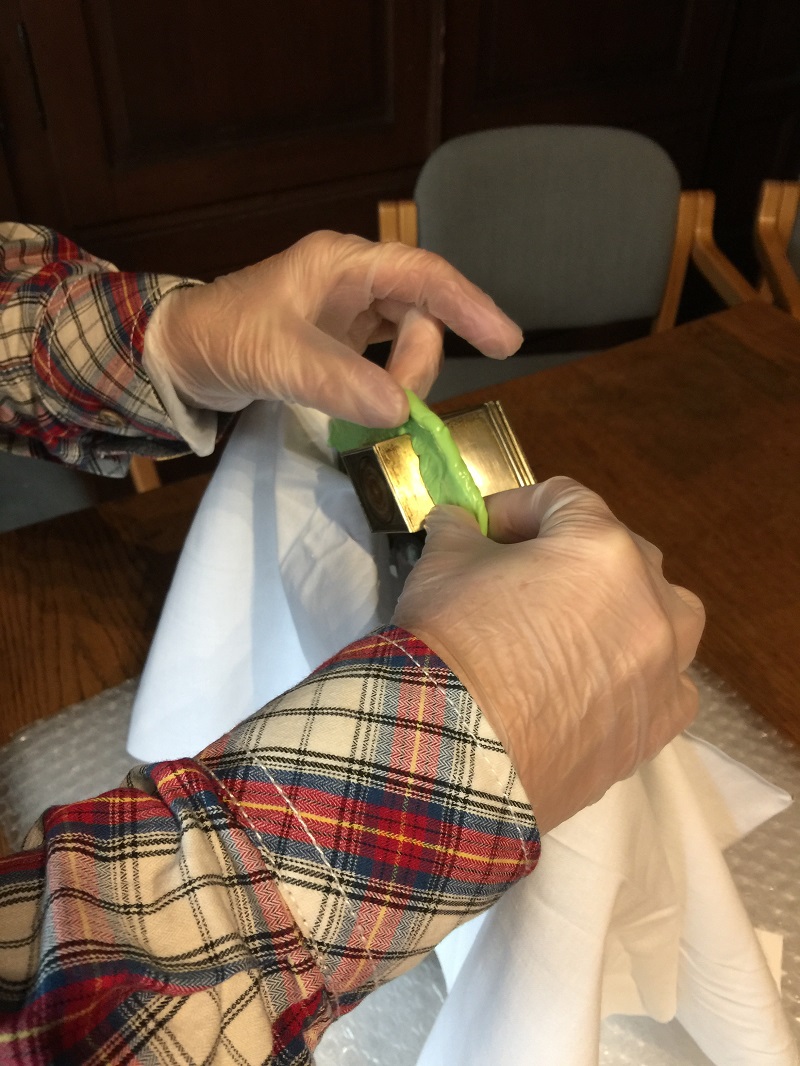
After the photo documentation and the measurement of the missing gemstone settings and the defective decorative objects, the threads of the stone settings that were no longer available were determined with the help of our prepared "test screws" so that they could later be reproduced precisely in the studio:
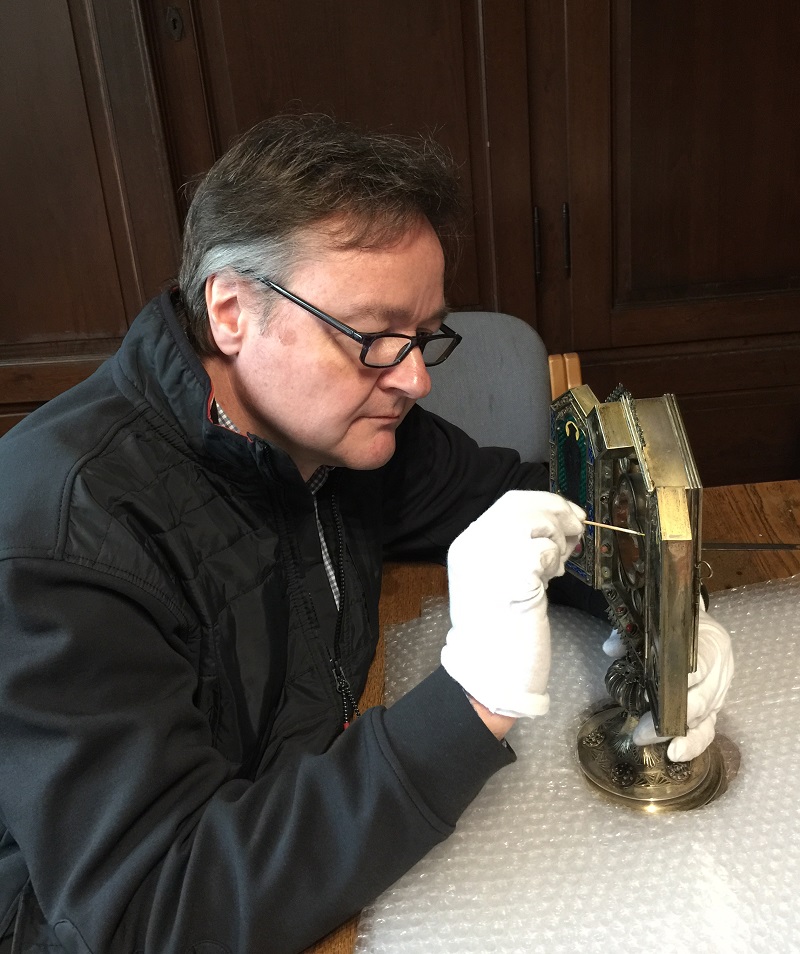
After almost two hours, all damage to the reliquary was photographed, measured, documented in writing and we were able to start our journey home inspired by the many unique impressions.
Should there be a restoration of this unique object following this actual recording, this will certainly be one of the most outstanding highlights of our efforts to do with historical goldsmith objects.
So we're keeping our fingers crossed for ourselves... 😉

